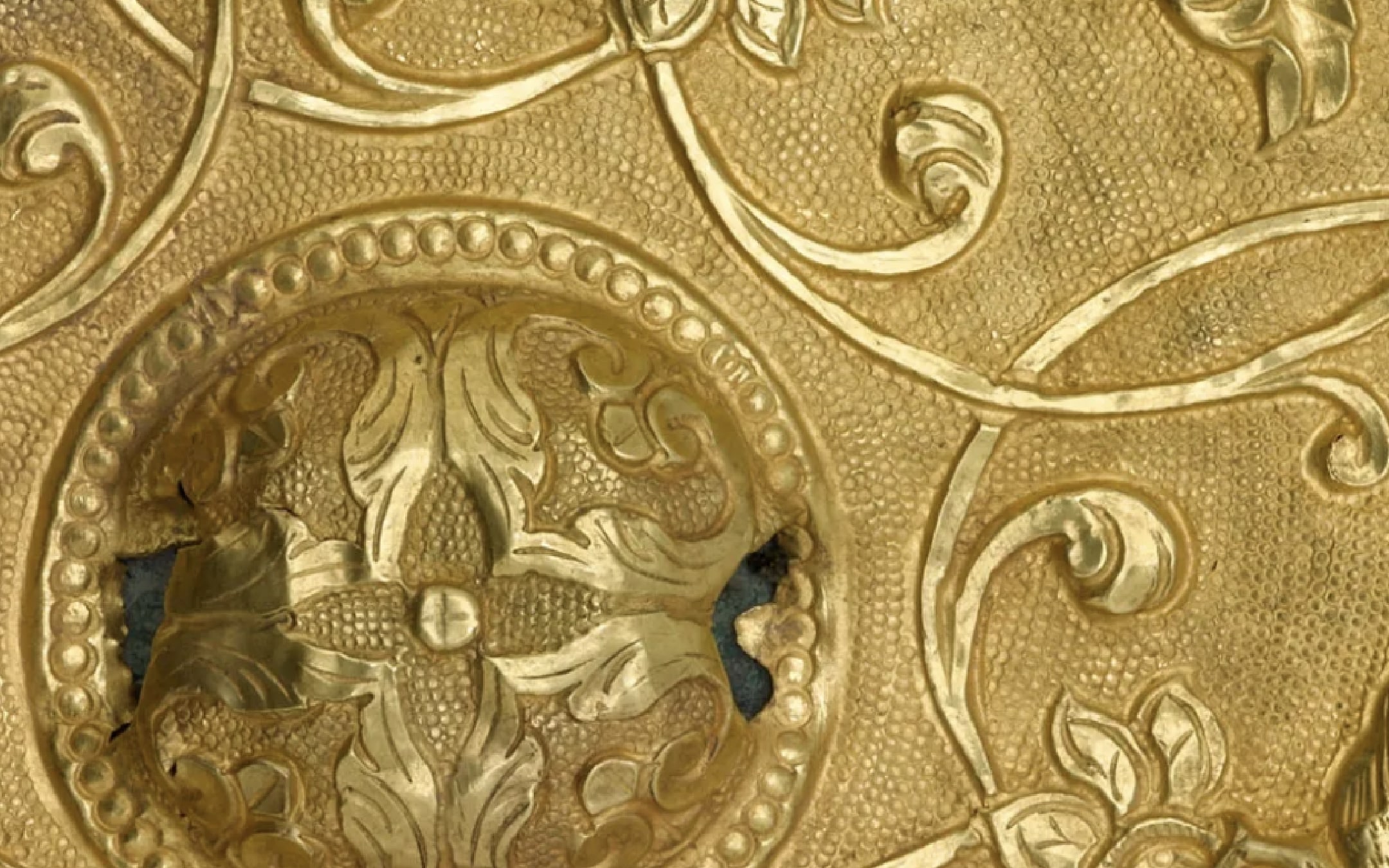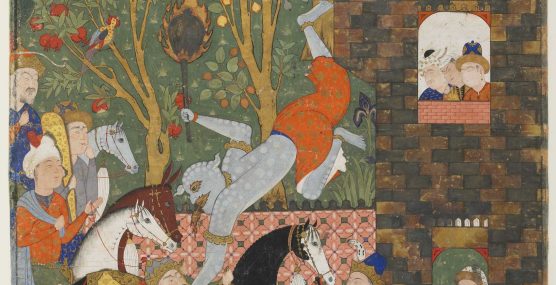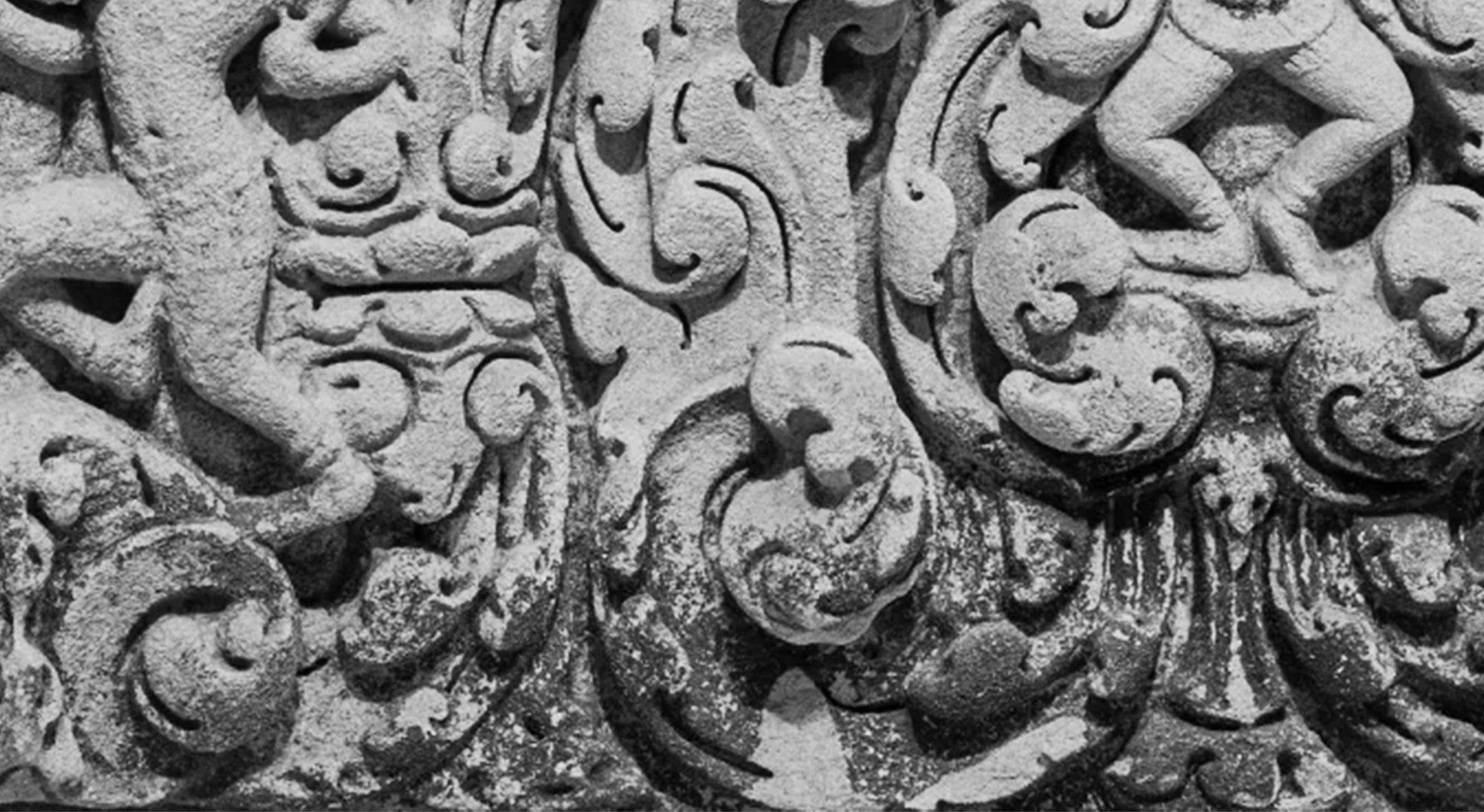October 24, 2009–January 24, 2010
-
Dates
-
Location
Arthur M. Sackler Gallery
-
Collection Area
Arts of the Islamic World
Whether by consulting the position of the planets, casting horoscopes, or interpreting dreams, the art of divination was widely practiced throughout the Islamic world. The most splendid tools ever devised to foretell the future were illustrated texts known as the Falnama (Book of omens). Notable for their monumental size, brilliantly painted compositions, and unusual subject matter, the manuscripts, created in Safavid Iran and Ottoman Turkey in the sixteenth and early seventeenth centuries, are the center piece of Falnama: The Book of Omens. The first exhibition devoted to these extraordinary manuscripts, Falnama: The Book of Omens sheds new light on their artistic, cultural, and religious significance. The exhibition comprises more than sixty works of art from international public and private collections and is accompanied by a fully illustrated catalogue.
Support
Falnama: The Book of Omens is organized by the Arthur M. Sackler Gallery. The exhibition has received generous support from anonymous donors, the Lee and Juliet Folger Fund, Roshan Cultural Heritage Institute, the Hagop Kevorkian Fund, Mr. and Mrs. Farhad Ebrahimi, Smithsonian Scholarly Studies Program, The Barakat Trust, The Packard Humanities Institute, and PARSA Community Foundation.
Exhibition Highlights
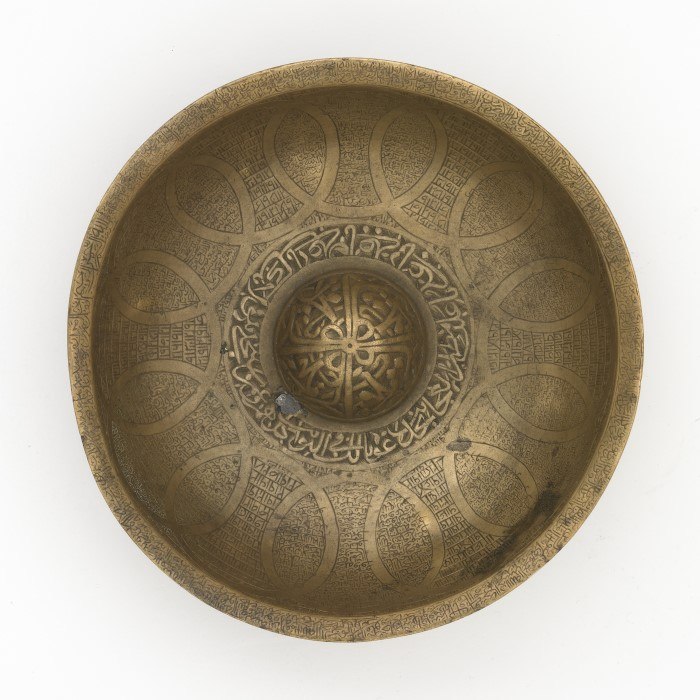
Divination Bowl Iran, Safavid period, mid-16th century.
Chased and engraved copper.
Arthur M. Sackler Gallery, S1997.38
Image 1 of 11
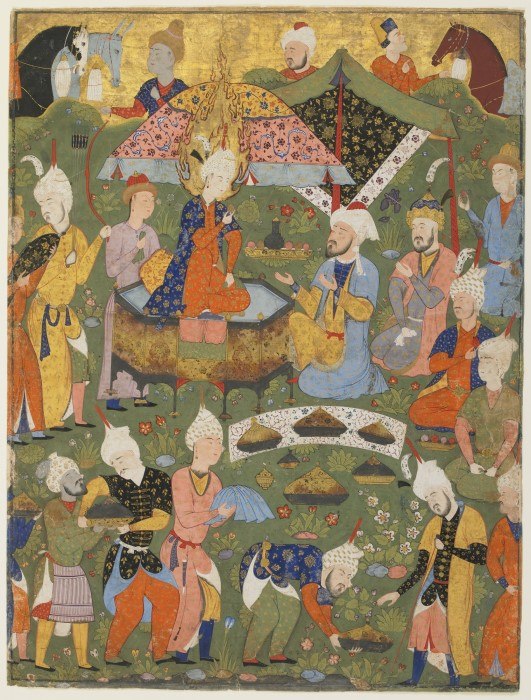
Detail, Joseph Enthroned with His Brothers in Egypt.
From the dispersed Falnama.
Iran, Qazvin, Safavid period, mid-1550s–early 1560s.
Opaque watercolor and gold on paper.
Arthur M. Sackler Gallery, S1986.255a
Image 2 of 11
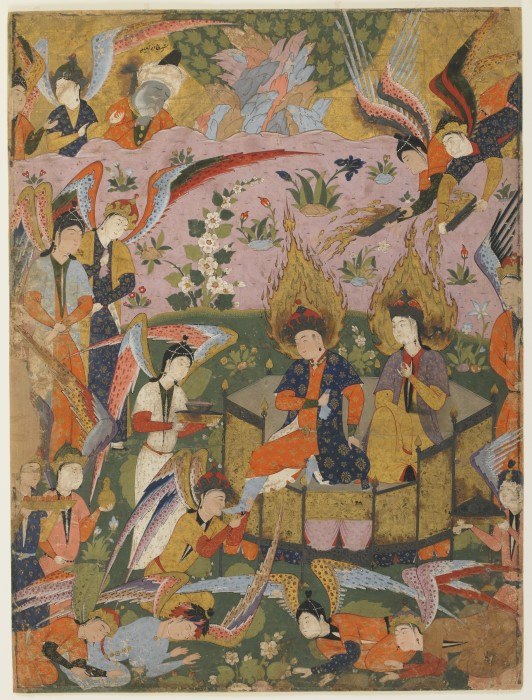
Detail, Angels Bow before Adam and Eve in Paradise.
From the dispersed Falnama.
Iran, Qazvin, Safavid period, mid-1550s–early 1560s.
Opaque watercolor and gold on paper.
Arthur M. Sackler Gallery, S1986.254
Image 3 of 11
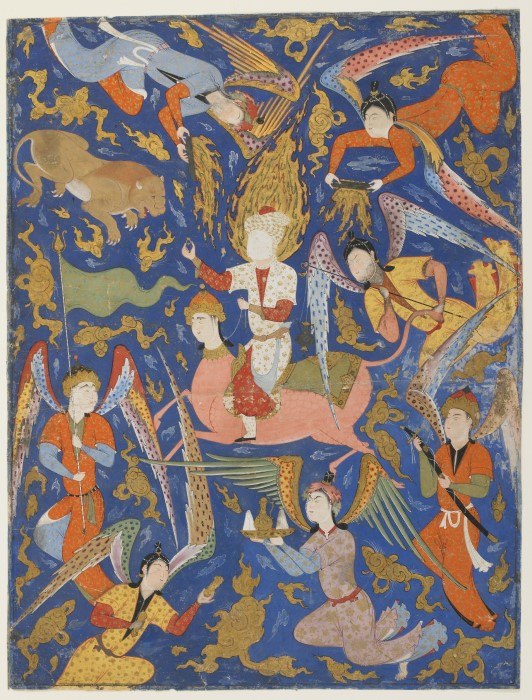
Detail, The Prophet Muhammad's Night Journey (miraj).
From the dispersed Falnama.
Iran, Qazvin, Safavid period, mid-1550s–early 1560s.
Opaque watercolor and gold on paper.
Arthur M. Sackler Gallery, S1986.253a
Image 4 of 11
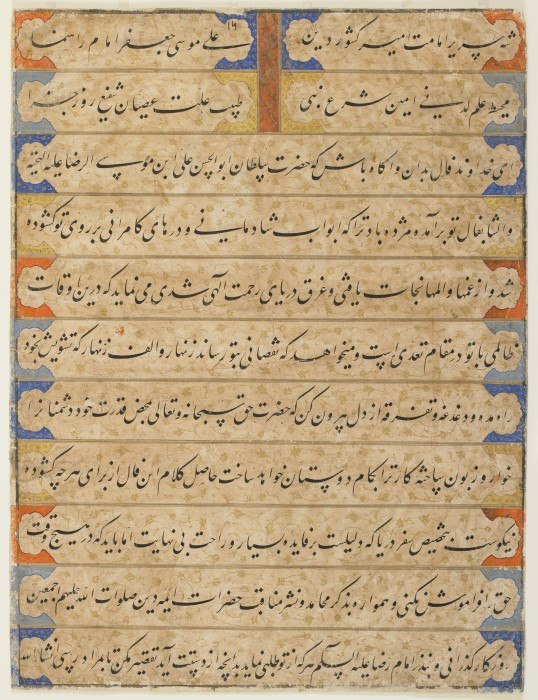
Augury of Imam Riza Saves the Sea People.
From the dispersed Falnama.
Iran, Qazvin, Safavid period, mid-1550s-early 1560s.
Opaque watercolor and gold on paper.
Arthur M. Sackler Gallery, S1986.252b
Image 5 of 11

Detail, The Angel of Death Descends on Shaddad ibn Ad.
From the dispersed Falnama.
Iran, Qazvin, Safavid period, mid-1550s-early 1560s.
Opaque watercolor and gold on paper.
Arthur M. Sackler Gallery, S1986.252a
Image 6 of 11
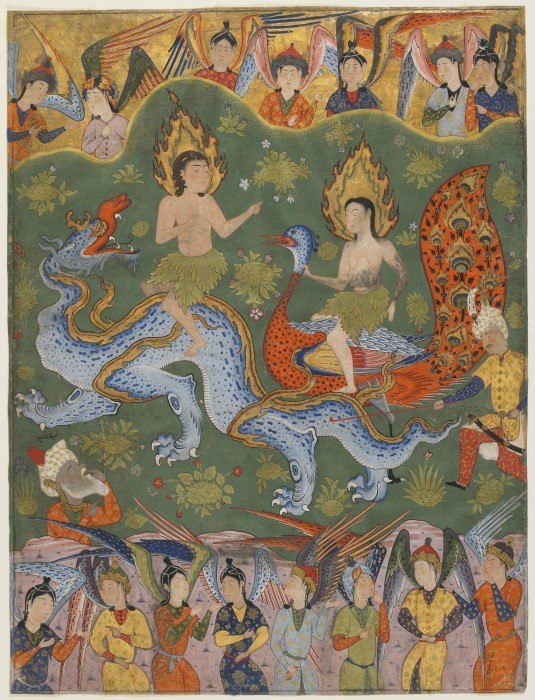
Detail, Adam and Eve Expelled from Paradise.
From the dispersed Falnama.
Iran, Qazvin, Safavid period, mid-1550s-early 1560s.
Opaque watercolor and gold on paper.
Arthur M. Sackler Gallery, S1986.251a
Image 7 of 11
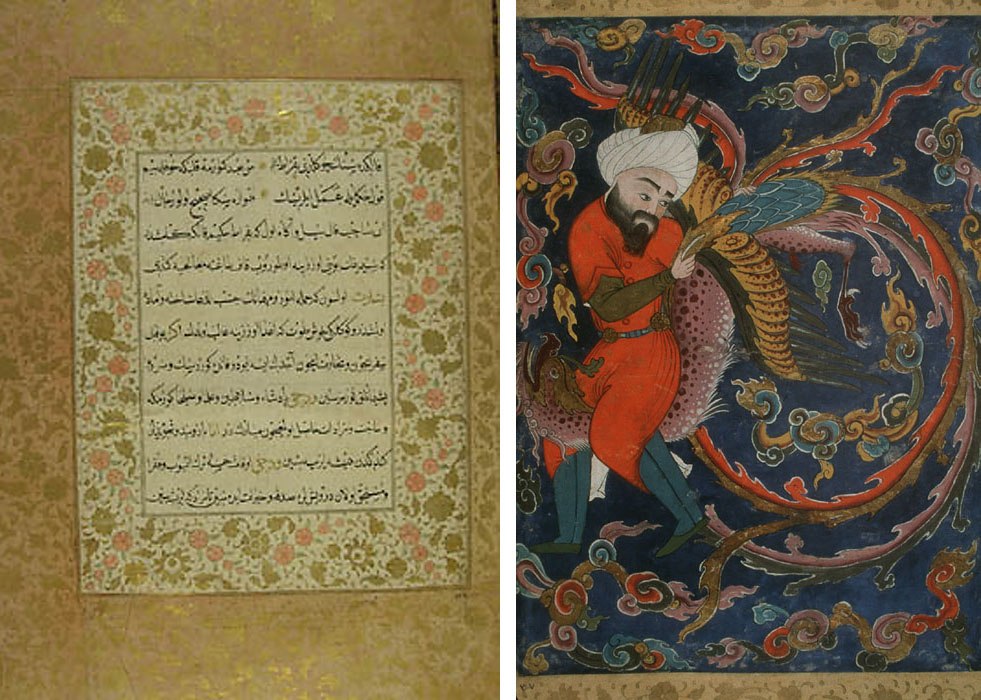
Hippocrates.
From the H.1703 Falnama.
Probably Iran, Safavid period, ca. 1580s; volume compiled in 1614–16 in Istanbul.
Opaque watercolor and gold on paper.
Topkapı Palace Museum, Istanbul, H.1703, f.38b
Image 8 of 11

Khaybar: The Conquering Palm of Ali.
From the H.1703 Falnama.
Iran, Safavid period, or Turkey, Ottoman period, ca. 1580s; volume compiled in 1614–16 in Istanbul.
Opaque watercolor and gold on paper.
Topkapı Palace Museum, Istanbul, H.1703, f.33b
Image 9 of 11
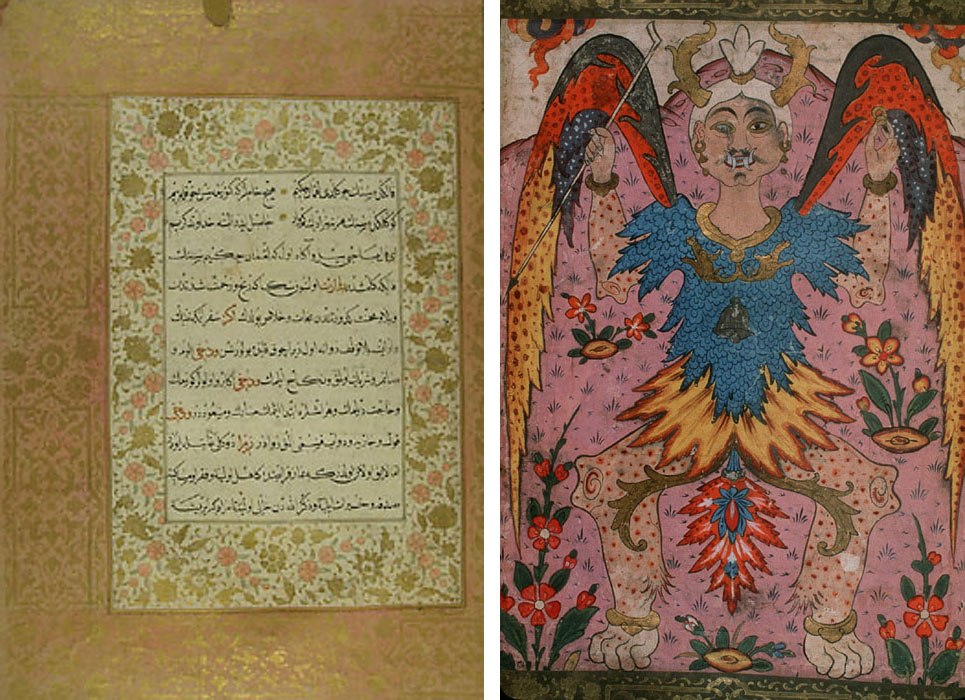
Beast of the earth.
From H.1703 Falnama.
Probably Iran, Safavid period, 1580s; volume compiled in 1614–16 in Istanbul.
Opaque watercolor and gold on paper.
Topkapı Palace Museum, Istanbul, H.1703, f.22b
Image 10 of 11
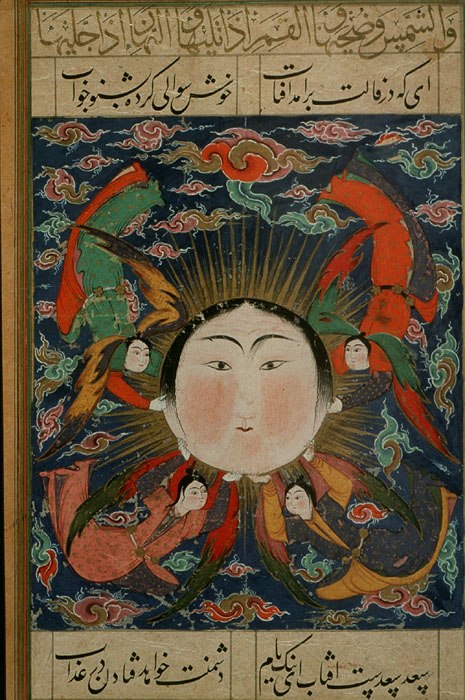
Detail, Sun.
From the H.1702 Falnama.
Probably Iran, Safavid period, 1580s.
Opaque watercolor and gold on paper.
Topkapı Palace Museum, Istanbul, H.1702,f.5b
Image 11 of 11
Iran; mid 1550s-early 1560s; Opaque watercolor, ink and gold on paper; H x W: 59.3 x 44.8 cm (23 3/8 x 17 5/8 in); Purchase--Smithsonian Unrestricted Trust Funds, Smithsonian Collections Acquisition Program, and Dr. Arthur M. Sackler. S1986.252
- Jump To...

